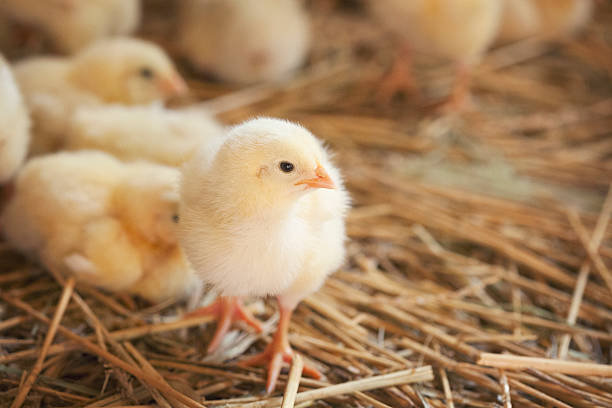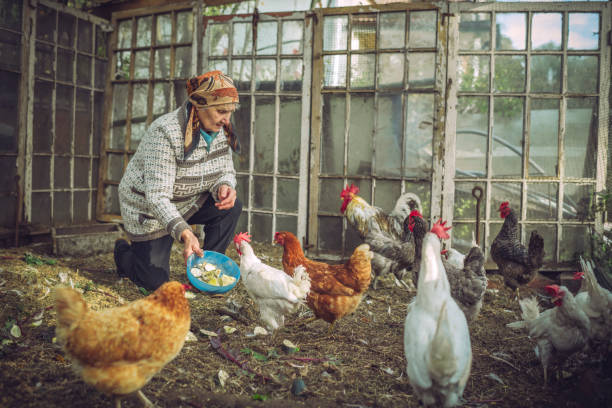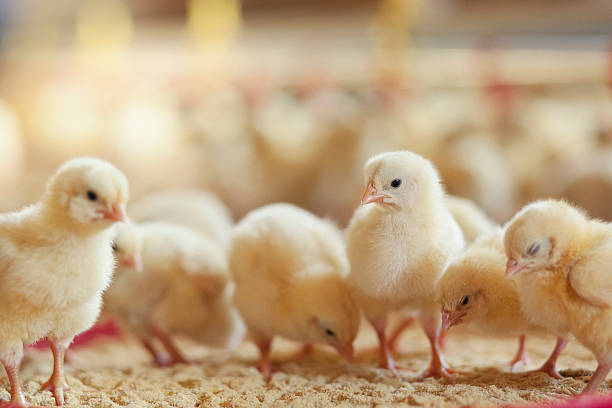It can be difficult to determine a chicken’s exact age simply by looking at it. There are some indicators and tips on how to approximatively determine the age of a chicken if you recently added some new chickens to your flock but are unsure of their age.
So that you can estimate the age of your chicks today, let’s get started.
Table of Contents
Overview of Chick and Chicken Ages
A chicken goes through four major life stages: chick, pullet or cockerel, adult (hen or rooster), and senior. Though some breeds age more quickly or more slowly than others, most chickens live between 6 and 8 years. This is a brief look at how fast chicks age and what to expect for developmental milestones:
• 0-16 weeks old: A chick is considered to be a pullet or cockerel at this stage when it has just emerged from the egg. Chicks learn survival skills during this time.
• 16-20 weeks old: A girl reaches this age when she first begins to exhibit gender-specific characteristics. This is about the time females (pullets) begin preparing for egg-laying. However, some breeds, like Brahmas, require more time than 20 weeks.
• 12 months old: Your teen chickens are now fully grown. Your hens will be able to lay eggs to their full potential.
• 12-18 months old: The majority of chickens go through their first complete molt at this time.
• 2-5 years old: Many chickens slow down after the age of two. Despite living for many more years, hens older than 2 years typically produce fewer eggs.
• 5 years and older: Senior chickens are those that are over the age of one and they move more slowly. Egg-laying hens are extinct. If you take good care of your chickens from birth, they may live past the age of 15 despite the fact that many breeds only live up to 8 or 10 years.
You should be most concerned with looking at characteristics that emerge between 0 and 16 weeks of age if you’re trying to determine the age of your chicks. A chick will then become a pullet or a cockerel instead of continuing to be a chick.
How to Tell the Age of a Chick?
Check the Plumage
Most chicks begin to develop their adult feathers between 2-4 weeks and begin to look a little scruffy. Depending on the breed and diet, the feather-growing process may take up to 5–6 weeks. From that point on, your chicks will go through mini-molts every 6 to 12 weeks until their first set of mature feathers appears.
You’ll see a change in your chicks’ gender with each mini-molt. The feathers around the neck of cockerels will be more pointed. Feathers on pullets are a little softer and more rounded. Cockerels also develop saddle feathers around their necks as they get older. The majority of roosters will also grow sickle feathers, whereas hens’ tails are less impressive.
Go by Body Size
1.4 oz (40 g) is about how much a chick weighs at birth, which is incredibly small and negligible. Small chicks are likely only a few days old if you are observing them.
Newborn chicks gain weight and grow quickly during their first month. The 1.4 oz chick will be approximately 2 lbs 6 oz (1 kg) at the conclusion of 12 weeks. However, bantam breeds will weigh less.
Fuller, thicker feathers and legs come with a larger size. Chickens in the adolescent stage have gawky appearances, while those getting close to adulthood have more filling out.
Look at Those Legs
Legs are long and thin when chicks first hatch. They have stronger, thicker legs than they did at birth, around 12 weeks. The legs of the females are noticeably thinner than those of the males. Additionally, some breeds (like ISA Browns) begin to develop colored legs.
Check the Combs and Wattles
Most chicks lack combs and wattles that can be seen with the naked eye, even when sex is involved. These features will require some searching on your part. However, some of the male chicks may stand out from the group due to their more pronounced combs and wattles.
Prior to 12 weeks of age, you won’t really notice these features. But as the combs and wattles approach adolescence, they become much more pronounced. The reddening of the combs and wattles may be seen. Nowadays, boys and girls look more different from one another, especially since the males have more developed wattles and combs.
Plucky Behaviors
You won’t notice many chicken-like behaviors in young chicks because they are attempting to survive as best they can. Chicks begin to focus on the pecking order around the age of 6 to 12 weeks after they start observing their surroundings. Young men will begin lowering their heads while posing or chest-bumping.
Female chicks exhibit behavior that is much more restrained. Female chicks typically move to the back while male chicks typically stand at the head of the group. They will not be as loud as the males and have a lower, more submissive stance within the group. The males, however, are much more assured. Among the other boys, they search for challenges.
Your male chicks will begin crowing at around 7 to 12 weeks. You will be able to tell a lot about a chick’s sex and personality by the twelfth week when they are pullets and cockerels.

How to Take Care of Chickens Depending on Their Age?
Baby Chickens
If you recently brought baby chickens into your household and are unsure of how to care for them, don’t worry; it’s not difficult. Your chickens need regular care until they can stand on their own because they are vulnerable and weak when they are up to six weeks old.
If you want to check on them more frequently, you may decide to keep them in your home; alternatively, you may decide to keep them in a barn. A brooder box is necessary in either case. You can either buy one or make your own. Make sure the space isn’t too small; the chickens should feel at ease in there.
The following thing you ought to give them is appropriate bedding, such as hay or wood shavings. They will stay warm and cozy as a result. They still aren’t big enough to control their own body temperatures, speaking of warmth.
You will have to install a heat lamp because they lack a mama hen to perform that task. Use a thermometer to properly control the temperature. 95 degrees Fahrenheit should be the approximate temperature. Reduce the temperature by 5 degrees after the first week.
The following weeks will be the same. Keep an eye on their behavior; if they become too hot, they should be able to escape the brooder box. They’ll try to huddle up together if it’s too cold. This will determine how to adjust the temperature.
They must always have access to clean water and fresh food, but that is by no means the least important requirement. As soon as they are four to six weeks old and have grown all of their feathers, they should remain in their brooder box.
Until They Are Five-Years-Old
No special care is required once your chickens’ feathers have grown in and they begin to lay eggs. Since they are all adults and no longer require a heat lamp, they can largely take care of themselves.
Make certain they have a spotless coop, clean food, and fresh water. Spend time with them every day, change their bedding at least once a month, and change their diapers. It will be simple to spot if something is wrong or if they become ill if you keep an eye on them frequently.
Old Chickens
Your chickens will stop laying eggs when they are about five years old, and you will be able to tell they are aging from the way they look. They can still be a useful addition to your backyard even though they don’t lay eggs. Their manure is a fantastic soil fertilizer, and they enjoy eating bugs and snails.
And what lovely pets they make too! It is simple to take care of them. Older chickens require a few extra things in addition to fresh food and water, routine coop cleaning, and bedding replacement.
It can be difficult for them to move around easily at this age because they are prone to arthritis. Make a ramp out of the stairs in your barn if there are any. If their nails grow too long, be sure to cut them, as they are unable to do so now. Regularly consult your veterinarian and be alert to any changes in case your pet becomes ill.

The Bottom Line: How They Act and Look
A chicken’s age cannot typically be determined with accuracy. On the other hand, based on how they act and look, you can easily tell what stage of life they are in. The best chickens to buy are pullets or baby chickens if you intend to raise them. The secret to a happy and long life for them is to take good care of them according to their age.
